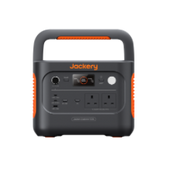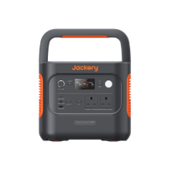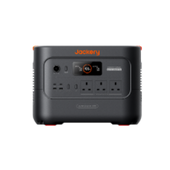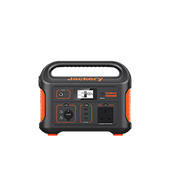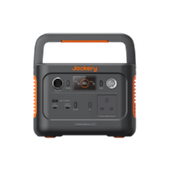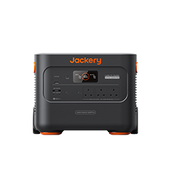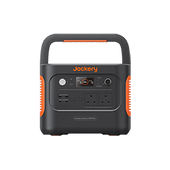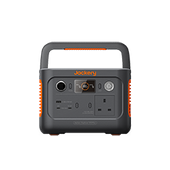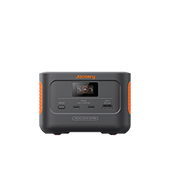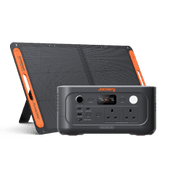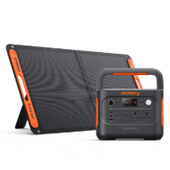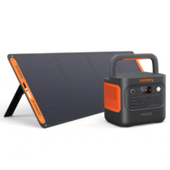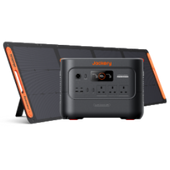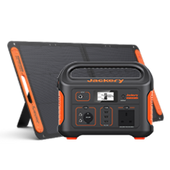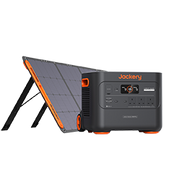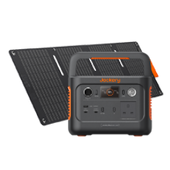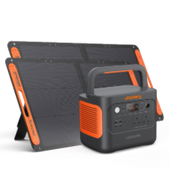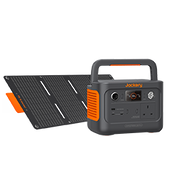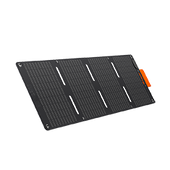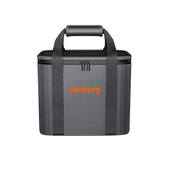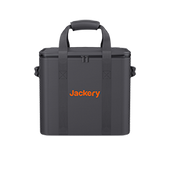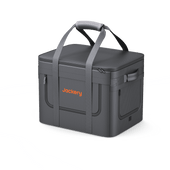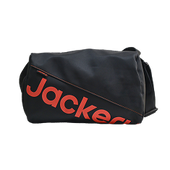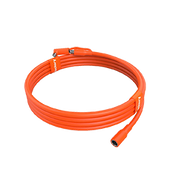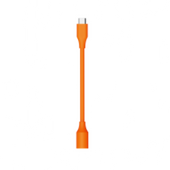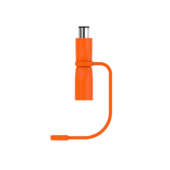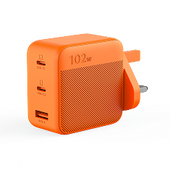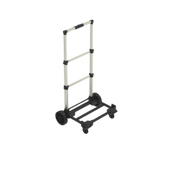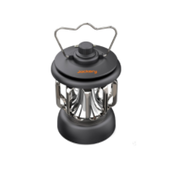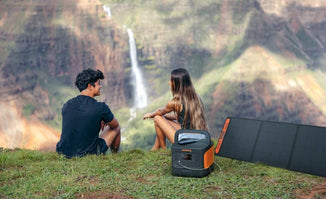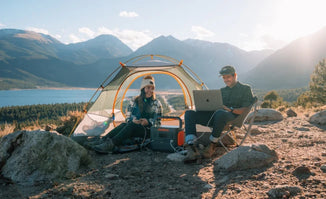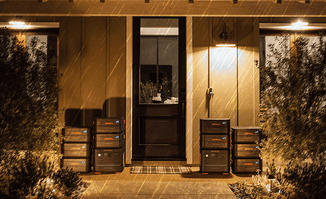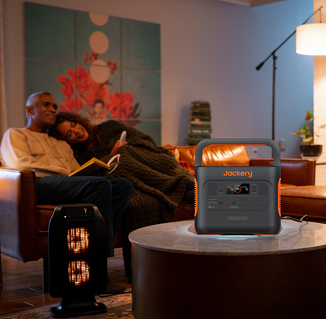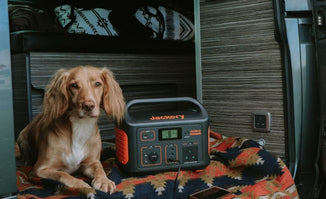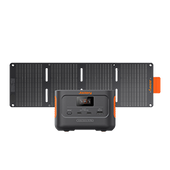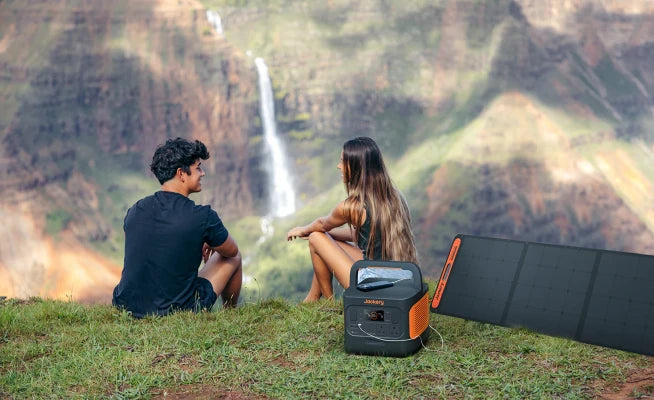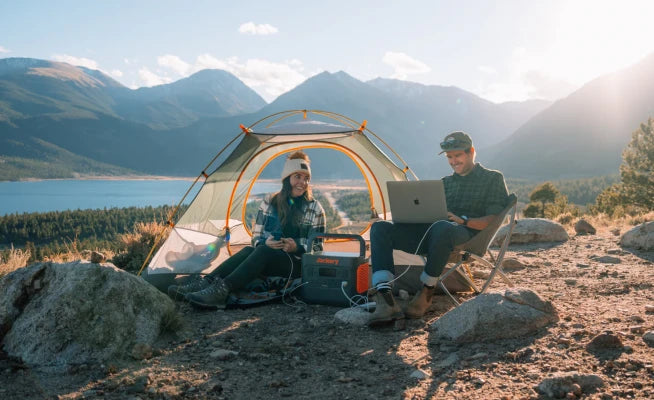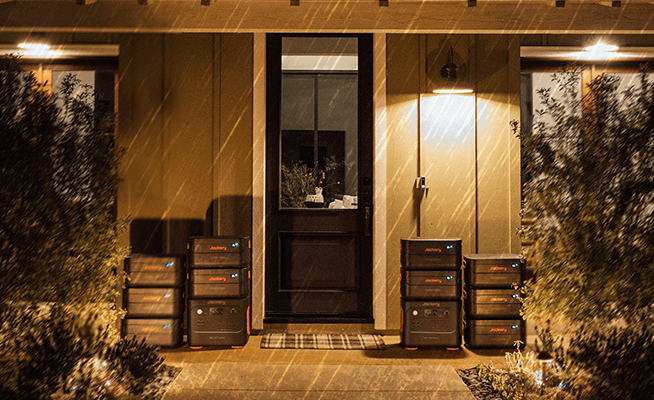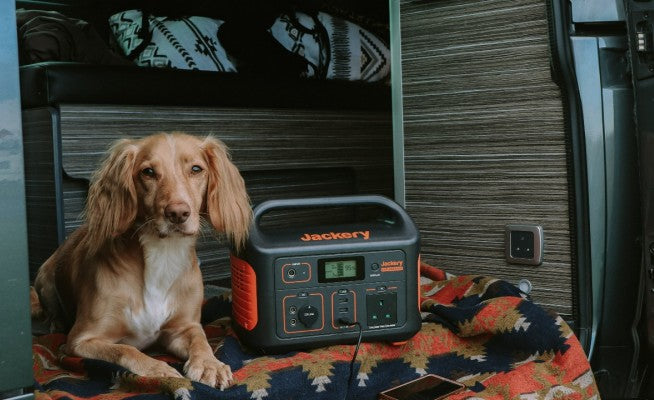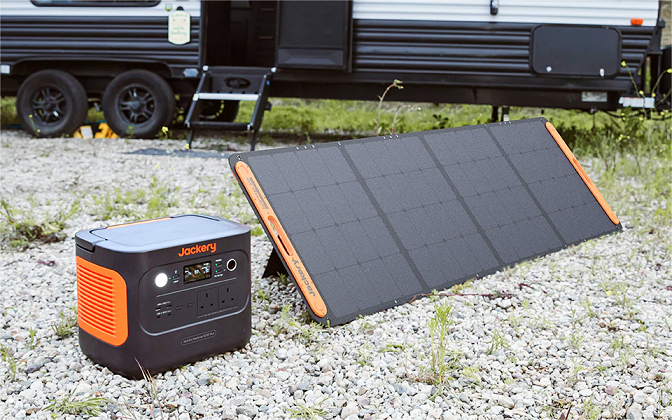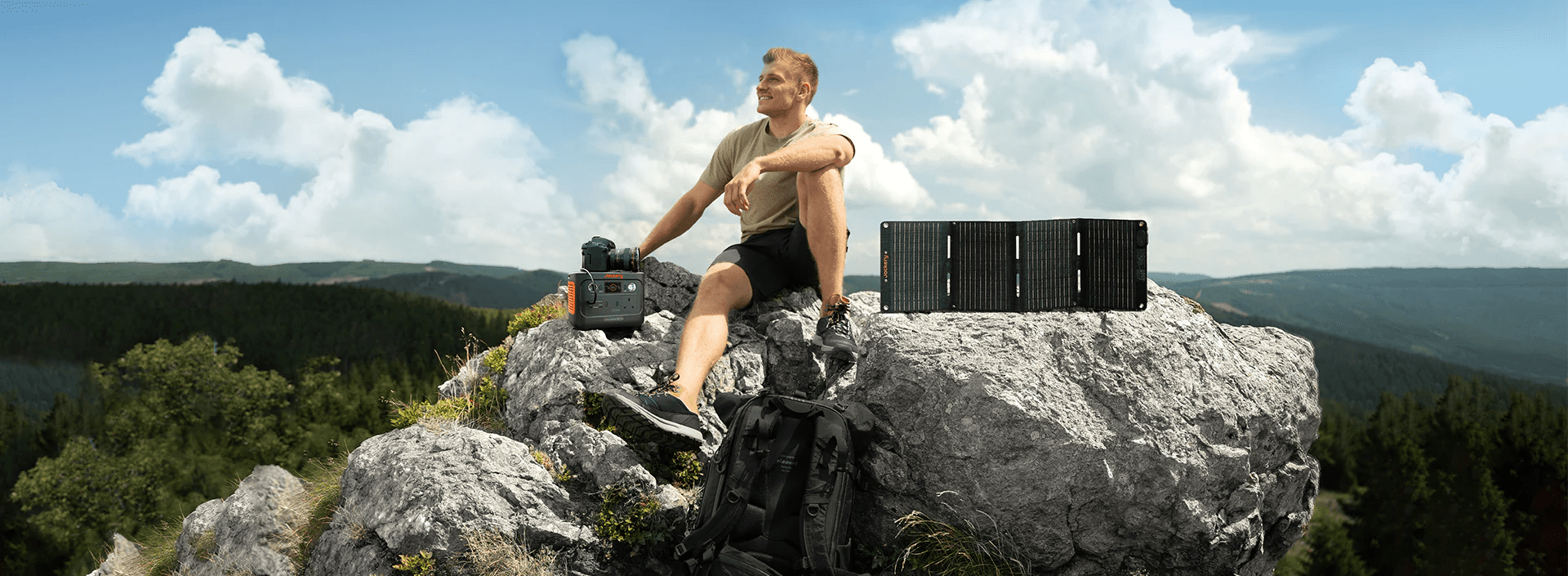Damp mornings, frosty winds, and the occasional downpour make winters in the UK chillingly cold. As the weather gets colder, it is understandable that people tend to retreat indoors to avoid freezing temperatures!
As people cosy up in warm beds and turn on their heaters, energy demands rise, leading many to rely on a portable power station to stay warm through the season. Home generators not only cut down on high utility bills during the season but also keep the heaters on during unexpected power outages.
However, instead of just hibernating indoors, why not go out for a winter run to enjoy the beauty of this season?
If you are an outdoor enthusiast brave enough to have some adventures out in the cold, now is a good time to start. Jackery will help make your winter run comfortable and safe. In this guide, we will share essential gear and tips to keep you motivated, comfortable, and safe on your exploration trip across the windy UK trails and streets!
Challenges of Winter Running
Winter running brings a unique set of challenges that can test the strength of even the most dedicated runners. Cold weather running requires careful preparation, from managing frigid temperatures to navigating slippery paths.
Here is a breakdown of some challenges that you may come across during a winter run:
1. Cold Temperatures
The biting cold can make stepping out for a winter run daunting. Muscles feel tighter, and the risk of injury increases. Moreover, it takes longer to warm up, making it harder to find your rhythm. Cold air can also feel harsh on your lungs, especially during intense runs. This further adds to the physical demand of winter running.
2. Icy Conditions
Icy or frosty patches are common obstacles in winter that prevent you from getting stability. Running on ice increases the risk of slips and falls, so runners must be more cautious with each step during their winter adventures. Special gear, such as trail shoes or traction devices, is also necessary to keep your footing secure.
3. Shorter Days
In winter, days are shorter. With limited daylight hours, runners are bound to face low-light conditions during morning and evening runs. Poor visibility can make it harder to see potential hazards on the path, increasing the need for reflective gear and headlamps to stay safe.
4. Wet and Snowy Conditions
Winter weather often means facing rain, sleet, or snow, which can quickly soak your clothes and make trails muddy. Wet clothing drains body heat, increasing the risk of hypothermia. This makes waterproof gear quite essential, but staying dry and warm remains a constant struggle.
5. Windchill
The wind can amplify the cold, making a winter run feel even more intense. Windchill bites through clothing layers, chilling exposed skin and making it harder to stay warm. Facing strong headwinds adds resistance to your run, adding both mental and physical challenges.
Essential Winter Running Gear
When it comes to running in the cold, having the right gear can make all the difference between a tough winter run and an exhilarating experience. Whether you are gearing up for a winter run 10K or taking on snowy trails, cold weather running requires specific gear to keep you warm and comfortable.
Hence, the following covers the essential winter running gear you will need to enjoy safe and refreshing winter jogging.
1. Clothing Layers for Winter Running
Winter running in colder temperatures means layering up wisely to stay warm without overheating. Layering enables you to adapt to changing conditions, which is crucial for a comfortable long run or an event like the Edinburgh winter run.
Here is how to cover yourself in layers properly:
- Base Layer: The base layer works as the foundation of your winter run outfit. Choose a moisture-wicking fabric to draw sweat away from your skin. This is important as wet clothing can lead to rapid heat loss, which is especially dangerous in cold weather. Materials like traditional wool or synthetic blends are excellent for staying dry and comfortable.
- Insulating Layer: An insulating layer traps body heat while still allowing sweat to escape from the base layer. Lightweight fleece or synthetic fabric works well here, helping you retain warmth without adding bulk. This layer is particularly important for extreme cold or running in snow, where extra insulation is needed.
- Outer Layer: The outer layer is much like a shell that protects you against wind, rain, and snow. Look for a windproof, water-resistant, breathable jacket to let moisture escape. An effective outer layer will shield you from harsh weather elements, enhancing the comfort and safety of your winter runs.
2. Accessories for Head, Hands, and Feet
Cold extremities can quickly ruin a winter run. This makes it essential to invest in the right accessories for running in the cold, as exposed skin can lose heat rapidly.
Here are some essential accessories you must pack before going for a winter run.
- Hats/ Headbands: Heat escapes quickly from your head, so wearing a hat or headband can make a significant difference. A thermal hat or fleece-lined headband will keep your head and ears warm without overheating, especially during intense runs.
- Gloves: Cold hands are a common problem when running in snow. Choose lightweight, insulated gloves that allow for movement without compromising warmth. If the temperature drops drastically, consider windproof gloves for extra protection.
- Socks: Winter running socks made from wool or synthetic blends help keep your feet warm and dry. In this situation, cotton may not be a good material choice, as it retains moisture, leading to cold, damp feet. Look for cushioned, thermal socks designed for outdoor activities to ensure comfort during long-distance runs, like a winter run 10K.
- Winter Running Shoes: Running in snow or wet conditions calls for shoes with added grip and water resistance. Winter-specific running shoes with rugged soles offer better traction on icy or slippery surfaces, while water-resistant materials keep your feet dry in slushy conditions.
3. Visibility Gear for Low-Light Conditions
Winter run often means heading out in low-light conditions, whether it is early morning or dusk. Enhancing your visibility is critical for safety, particularly on roads or dimly lit paths.
- Reflective Clothing and Gear: Reflective vests, jackets, and accessories help make you visible to others, especially motorists. Choose running gear with reflective details or add reflective bands to your wrists, ankles, and back to increase your chances of being seen in low-light conditions.
- Running Lights: Running lights, like headlamps or clip-on LED lights, are essential for illuminating your path and signalling your presence. Headlamps are especially helpful for trail running, allowing you to see potential hazards and enjoy a clear view of the path ahead.
Tips For A Successful Winter Run (Before, During, and After)
In addition to necessary winter run gear, you also need to equip yourself with professional knowledge to stay safe and enjoy the road. This section will give some common tips for you to follow before, during, and after your run.
1. Before Winter Running
Before you head out into the cold, here are some things to check.
- Check Weather Conditions: Always start by checking the weather forecast. Knowing what may happen ahead can help you dress appropriately for any potential challenges, such as snow accumulation or icy patches on your route.
- Hydration and Nutrition: Even in winter, staying hydrated is crucial. Drink water before your run, as dehydration can still occur. Additionally, fuel your body with nutritious snacks that provide energy, such as bananas, nuts, or energy bars, to maintain stamina throughout your winter run.
- Warm-Up Routine for Cold Weather: A proper warm-up is essential in colder temperatures to get your blood flowing and loosen your muscles. Incorporate dynamic stretches and light movements targeting your legs, hips, and core to prepare your body for the run ahead and reduce the risk of injury.
2. During Winter Running
Then, what should you pay attention to while running? Well, here are some things to consider while on the road.
- Stay Visible in Low Light: When running in winter, especially in the early mornings or evenings, it is vital to stay visible. Use reflective clothing and gear, such as vests and bands, to ensure you can be seen by others, including motorists. Consider carrying running lights, clip-on LEDs, or a headlamp to illuminate your path and increase safety. They help you see obstacles while also making you more visible to traffic. Always choose safe routes, preferably well-lit areas or trails that are familiar to you, for a safe running experience.
Small On-road Power Solution: Jackery Explorer 100 Plus Portable Power Station

The Jackery Explorer 100 Plus Portable Power Station is an excellent compact and versatile option for runners. With a capacity of 99Wh and 128W, this palm-size solar power station allows you to charge your running lights and other essential electronic devices on the go. Specifically, it supports 100 W dual PD discharging and can be used to charge up to three devices at the same time. With its lightweight design and efficient charging capabilities, this portable power station keeps you connected and prepared, no matter where your running adventures take you! Furthermore, in addition to solar power, you can also charge it using a carport or a USB-C cable.
- Know Your Limits in Extreme Cold: When running in cold weather, it is important to listen to your body and recognise your limits. If temperatures drop too low or the wind chill becomes unbearable, consider shortening your run or finding an indoor alternative.
- Deal with Slippery Conditions: Icy and slippery paths can pose a serious risk. Use shoes with good traction, and consider using traction devices for added grip. Be mindful of your footing and avoid quick movements that could lead to falls.
3. After Winter Running
What to do after a winter run? Here is what you should do after coming back from a winter run.
- Change Wet Clothes: Once you finish your run, promptly change out of any wet clothing to avoid getting chilled. Wet clothes can drain your body heat and increase the risk of hypothermia.
- Post-Run Warm-Up Exercises: Engage in post-run warm-up exercises to help your body transition back to a comfortable state. Focus on gentle stretches to ease muscle tension and promote recovery after running in snowy or cold conditions.
- Rehydration and Recovery Nutrition: Rehydrating after your run is vital, even in winter. Drink water or electrolyte-rich beverages to replenish lost fluids. Refuel with a recovery bar or a balanced meal that includes much protein and carbohydrates to aid recovery.
- Skin and Joint Care: Cold weather can dry out your skin, so apply a good moisturiser after your run, paying special attention to any exposed areas. For joint care, consider gentle stretching and foam rolling to relieve any tightness or soreness from the cold weather.
Home Power Station: Jackery Explorer 2000 Plus Portable Power Station

To create a warm indoor environment for your recovery, we recommend the Jackery Explorer 2000 Plus Portable Power Station to power your heating appliances. Its substantial basic capacity of 2 kWh can be expanded to provide up to 12 kWh, making it ideal for home power needs even during power outages.
The Jackery Explorer 2000 Plus Portable Power Station can support your heavy-duty devices with a total output of up to 3000W. With this much energy, you can easily power heaters and other essential appliances. Moreover, this solar system can be fully charged in 2 hours using 6 Jackery SolarSaga 200W solar panels, offering a sustainable energy source that reduces dependence on the power grid. It also features convenient charging options, including wall charging in 1.7 hours and car charging in 25 hours. This versatility makes the Jackery Explorer 2000 Plus Portable Power Station an invaluable asset for winter preparedness.
Wrapping It Up
Embracing the cold with a winter run can be an adventurous experience for running enthusiasts. By equipping yourself with the right gear and following the tips mentioned above, you will not only stay warm and safe but also enjoy the beauty of the winter landscape. From layering effectively to ensuring visibility in low light and keeping your essential gear charged with a Jackery solar power station, every detail matters in making your winter running adventures comfortable, safe, and enjoyable.
So, lace up your winter running shoes, grab your gear, and step out into the crisp air because the best winter run awaits you!

